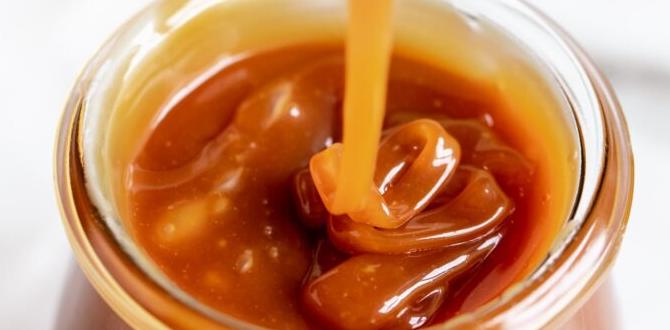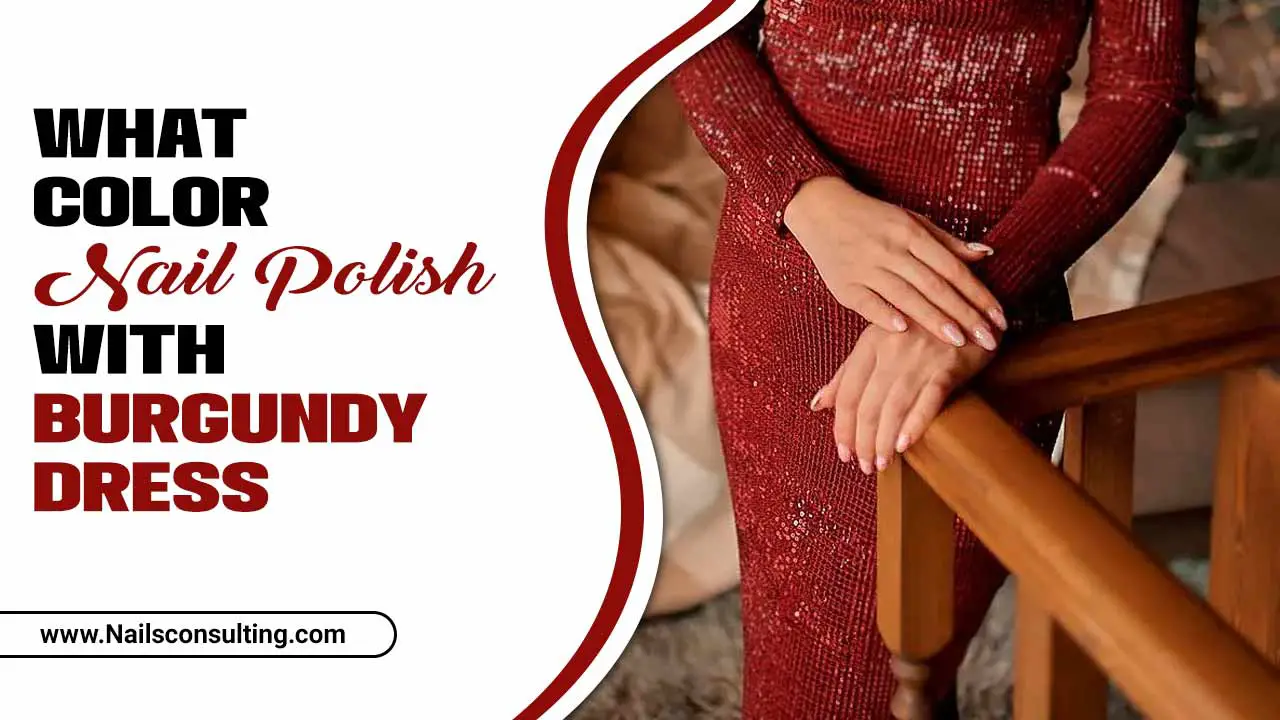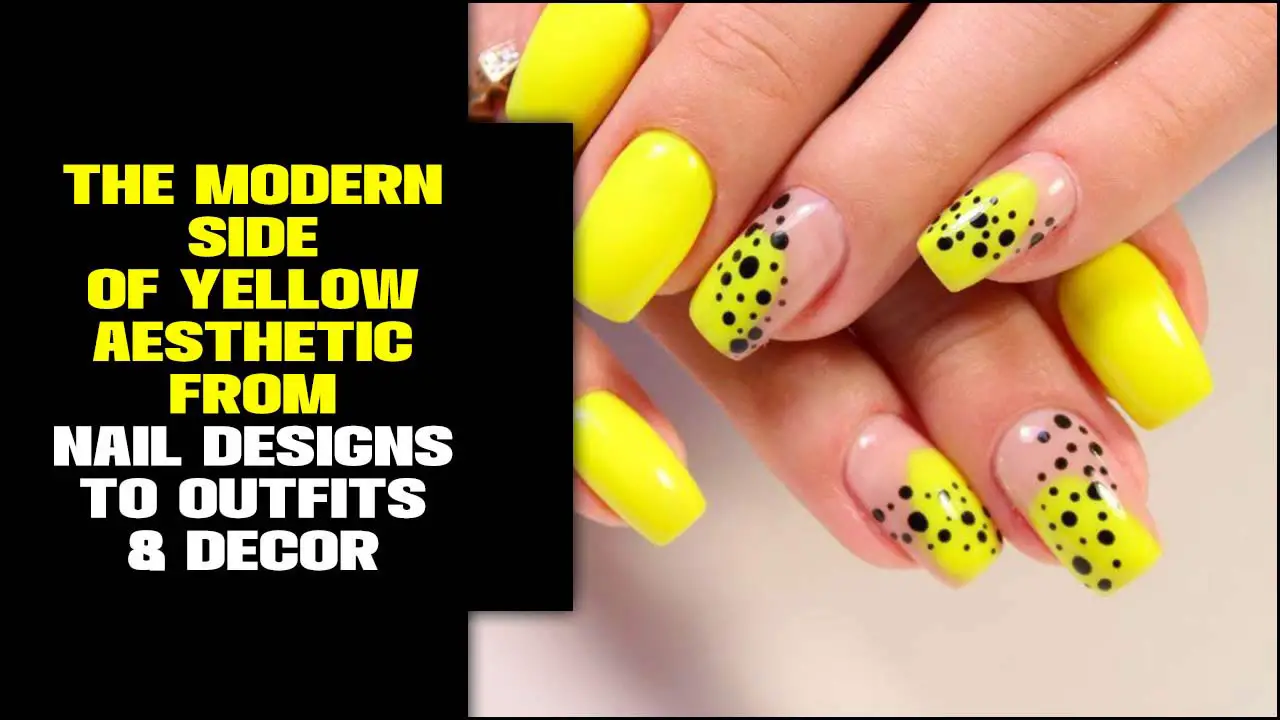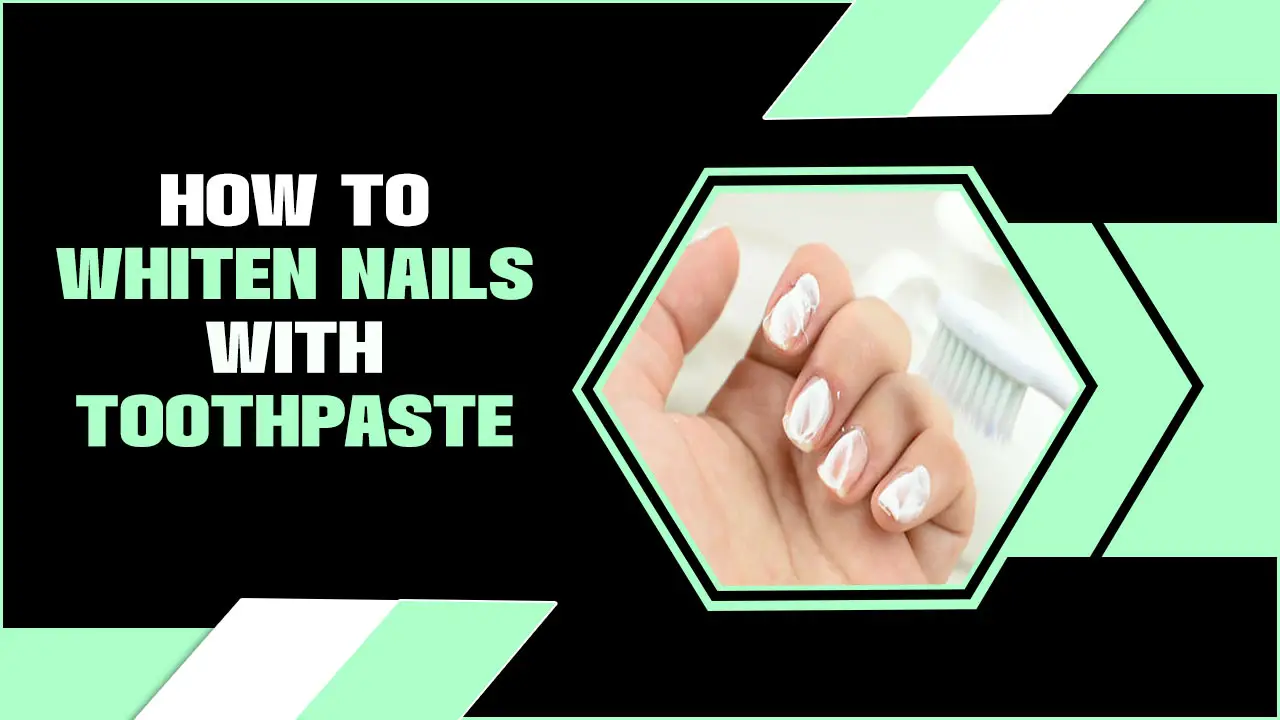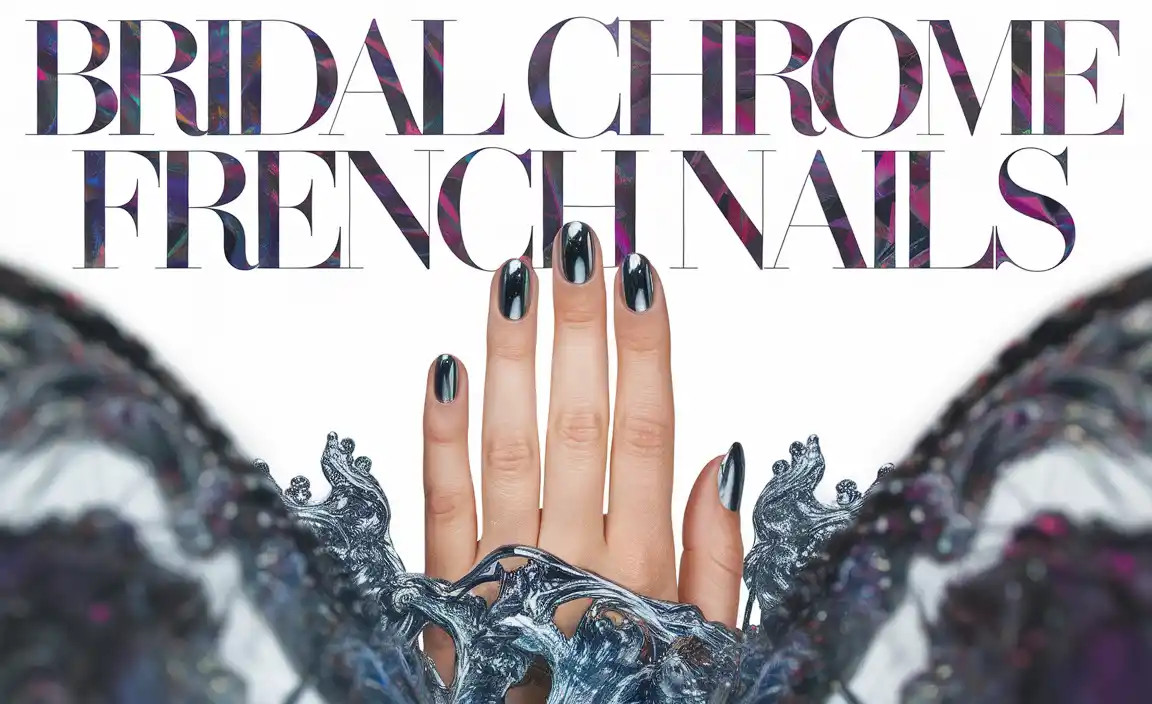Tweed nail designs offer a chic, textured look that’s surprisingly easy to achieve! With a few simple steps and basic nail art tools, you can create sophisticated, woven-inspired manicures for a touch of effortless elegance.
Ever look at a beautifully tailored tweed jacket and wish your nails could capture that same sophisticated charm? Many of us admire this classic pattern but feel intimidated by the idea of recreating it on such a small canvas. It can seem complicated, leading to frustration and sticking to plain colors. But what if I told you that tweed nail designs are not only achievable but also incredibly fun and beginner-friendly? Get ready to unleash your inner stylist with easy-to-follow tips and tricks that will have your nails looking runway-ready in no time!
What Exactly is a Tweed Nail Design?
Tweed nail designs are inspired by the iconic woven fabric known for its distinctive crisscross pattern and often textured appearance. Think of the cozy, classic look of a Chanel-inspired jacket or a warm, stylish scarf. On nails, this translates to creating a visual impression of intersecting threads, usually with thin lines of contrasting colors over a base shade. The beauty lies in its versatility – it can be subtle or bold, mimicking different tweed color combinations and textures. It’s a way to bring a piece of timeless fashion onto your fingertips, adding a touch of refined artistry to your overall look.
Why You’ll Love Tweed Nail Designs
There are so many reasons why tweed is a fantastic choice for your next manicure. It’s a design that transcends seasons and occasions, offering a polished finish that complements almost any outfit. Let’s break down why it’s becoming a favorite for so many:
- Timeless Elegance: Tweed is a classic pattern that never goes out of style. It adds an instant touch of sophistication and polish.
- Versatile Color Palettes: You can create tweed designs in virtually any color combination. From classic black and white to muted pastels or vibrant jewel tones, the possibilities are endless.
- Textural Illusion: The overlapping lines create a visual texture that’s intriguing and eye-catching, even on a flat surface.
- Beginner-Friendly: While it looks intricate, the technique is surprisingly simple to master, making it perfect for at-home manicures.
- Customizable: Adjust the thickness of the lines, the colors used, and the overall pattern to fit your personal style.
Getting Started: Your Tweed Nail Design Toolkit
Before we dive into the fun part of creating the design, let’s make sure you have everything you need. Don’t worry, you probably already have most of these items, or they are easy to find at your local drugstore or beauty supply store. Having the right tools makes the process smooth and enjoyable, leading to much better results. Think of this as gathering your art supplies before painting a masterpiece!
Essential Tools and Materials:
- Base Coat: This protects your natural nails and helps your polish adhere better.
- Top Coat: Seals your design, adds shine, and makes your manicure last longer.
- Nail Polish Colors: You’ll need at least two or three colors – one for the base and one or two for the tweed lines.
- Fine-Tip Nail Art Brush or Dotting Tool: A micro-liner brush is ideal for creating thin, precise lines. A fine-tipped dotting tool can also work for a slightly different effect.
- Nail Polish Remover and Cotton Swabs/Pads: For cleaning up any mistakes – because they happen to everyone!
- Optional: A clean-up brush (a small, flat synthetic brush works wonders) can be incredibly helpful for those crisp edges.
Step-by-Step: Creating Your Tweed Nail Masterpiece
Ready to transform your nails into tiny works of art? Follow these simple steps to create a beautiful tweed nail design. Remember, patience and practice are key, so have fun with it!
Step 1: Prepare Your Nails
Start with clean, dry nails. Gently push back your cuticles using an orange wood stick. If desired, file your nails to your preferred shape. It’s always a good idea to give your nails a quick wipe with nail polish remover to remove any oils, which helps the polish adhere better.
Step 2: Apply Your Base Coat
Apply one thin coat of your chosen base color. This will be the background of your tweed pattern. Let it dry completely. Applying polish in thin coats is much better than one thick, gloopy coat. It dries faster and looks smoother.
Step 3: Add Your First Line Layer
This is where the tweed magic begins! Using your fine-tip brush and a contrasting nail polish color, paint a few thin, straight lines horizontally across your nail. Think of them as the warp threads of your fabric. Don’t worry about perfection; slightly uneven lines can add to the charm and organic feel of tweed. Ensure these lines are relatively spaced out, giving you room for more lines.
Step 4: Add Your Second Line Layer
Now, pick up another contrasting color for your vertical lines (the weft threads). With your fine-tip brush, carefully paint thin lines vertically across your nail, intersecting with the horizontal lines you just painted. Again, keep the lines thin and as straight as you can manage. The intersection points are what create the woven look. You can use the same color as the horizontal lines for a simpler design, or use a third color to add more depth.
Step 5: Refine and Add Detail (Optional)
Once your intersecting lines are dry, you can go back with a very fine brush and a dotting tool, or even the tip of a toothpick, to add tiny dots or dashes at some of the intersection points. This mimics the knobby texture often found in real tweed fabric and adds a sophisticated touch. Experiment with where you place these small embellishments.
Step 6: Clean Up Your Edges
Dip a cotton swab or a small clean-up brush into nail polish remover. Carefully trace around your cuticle line and the sides of your nails to remove any polish that got onto your skin. This step makes a huge difference in how professional your manicure looks!
Step 7: Apply Your Top Coat
Once all the polish is completely dry – and this is important to avoid smudging! – apply a generous coat of your top coat. This will seal in your design, add incredible shine, and help prevent chips, making your beautiful tweed nails last longer.
Popular Tweed Nail Design Variations
The beauty of tweed nails is their adaptability. You can play with color, line thickness, and even add embellishments to create unique looks. Here are a few popular variations to inspire your next manicure:
Classic Houndstooth Tweed
This iconic pattern features broken checks or abstract four-pointed shapes. To achieve this:
- Start with a neutral base (e.g., black, white, or beige polish).
- Using a fine brush, paint chunky “L” shapes and flipped “L” shapes in a contrasting color, creating a stepping stone effect across the nail.
- Alternatively, paint thin black and white lines crisscrossing each other, then use a very fine brush to outline segments to create the houndstooth effect.
Color Block Tweed
Instead of thin lines, use blocks of color.
- Apply a base color.
- Once dry, use striping tape to section off areas and paint bold blocks of color.
- Remove tape and then paint thin lines over the color blocks to mimic the tweed weave.
Subtle Single-Color Tweed
For a more understated look:
- Use two shades of the same color (e.g., light grey and dark grey).
- Apply the lighter shade as the base.
- Paint thin, intersecting lines of the darker shade over the top.
Textured Tweed with Glitter
Add a touch of glamour.
- Create a standard tweed design using your chosen colors.
- While the lines are still slightly wet, gently dab a small amount of fine glitter over some of the intersection points.
- Seal with a top coat.
Tips for Perfecting Your Tweed Nail Design
Even with simple steps, a few pro tips can elevate your DIY tweed nails from good to absolutely stunning. These little tricks help ensure a smooth application and a professional finish, even if you’re just starting out.
Quick Tips for Success:
- Thin Coats are Key: Avoid thick, gloopy polish. Apply multiple thin coats for a smoother finish and faster drying time.
- Work With Patience: Let each layer dry sufficiently before adding the next. This prevents smudging and makes clean-up easier.
- Steady Your Hand: Rest your wrist or elbow on a stable surface. You can also lightly brace your pinky finger on the table for extra stability.
- Clean Up Immediately: Don’t wait for polish to dry on your skin. Use a cotton swab dipped in remover right after you finish applying lines for the cleanest results.
- Practice Makes Progress: If your first attempt isn’t perfect, don’t get discouraged! Every attempt is a learning opportunity, and you’ll see improvement with each try.
- Embrace Imperfection: Real tweed has a handmade quality. Slight variations in line placement or thickness can add to the authentic charm of your design.
Troubleshooting Common Tweed Nail Design Challenges
It’s normal to run into a few hiccups when trying a new nail art technique. Here’s how to fix some common issues you might encounter while creating your tweed nails:
Smudged Lines:
Problem: You touched a wet line before it was fully dry.
Solution: Gently use the tip of a clean orange wood stick, or a tiny bit of polish remover on a cotton swab, to carefully smooth out the smudge. If it’s a significant smudge, you might need to gently dab on a bit more base color to cover it and then re-apply a thin line if possible, or accept that it will be part of the “organic” look. Always try to let lines dry for a minute or two before applying the next set.
Wobbly Lines:
Problem: Your hand wasn’t steady enough.
Solution: Use a clean-up brush dipped in nail polish remover to gently “carve” the line straighter. You can also go over the wobbly line with a bit more of the base color to erase and redraw. Practicing on a piece of paper first can also help!
Lines Too Thick:
Problem: Your brush was loaded with too much polish, or you didn’t have a fine enough tip.
Solution: Carefully “clean up” the edges of the thick line with your clean-up brush and remover. Alternatively, you can try to go over the thick line with a slightly darker or lighter shade of the base color to disguise it, or simply accept it as part of a bolder tweed look and try thinner lines next time. Investing in a good quality, thin nail art brush is highly recommended for preventing this issue.
Uneven Color Saturation:
Problem: The color of your lines isn’t opaque enough.
Solution: Let the first layer of your lines dry completely. Then, carefully apply a second thin coat of the same line color. This will build opacity without making the lines too thick.
Maintaining Your Tweed Manicure
Once you’ve created your beautiful tweed nail design, you’ll want it to last! Proper care can help your manicure stay looking fresh and stylish for longer.
Tips for Longevity:
- Reapply Top Coat: Every 2-3 days, apply another layer of top coat. This refreshes the shine and adds an extra protective barrier.
- Wear Gloves: When doing household chores, washing dishes, or handling harsh cleaning products, wear rubber gloves. Water and chemicals can break down polish.
- Moisturize: Keep your hands and cuticles hydrated with a good hand cream and cuticle oil. Dry skin can lead to hangnails and can make your manicure look less polished.
- Avoid Harsh Filing: Try not to use your nails as tools. Avoid prying open things or scraping.
- Touch-Ups: If you notice a tiny chip or wear on an edge, you can often fix it with a tiny touch of your base color and a carefully applied top coat.
FAQ: Your Tweed Nail Design Questions Answered
Here are some answers to common questions about creating tweed nail designs:
| Question | Answer |
|---|---|
| Can I do tweed nail designs with regular nail polish, or do I need special gel? | You can absolutely create beautiful tweed nail designs with regular nail polish! While gel polish offers longer wear and a super glossy finish, standard polishes work perfectly for this technique. All you need is a fine-tip brush and your favorite polish colors. |
| What colors are best for a classic tweed look? | Classic tweed often uses neutral and sophisticated color combinations like black and white, grey and white, beige and black, or navy and cream. However, don’t be afraid to experiment! Pastels, jewel tones, or even monochromatic shades (like different blues) can create a stylish tweed effect. |
| How do I get really thin, straight lines for my tweed design? | The key to thin, straight lines is a good quality nail art brush with a very fine tip. Load the brush with a small amount of polish, wipe off excess on the bottle opening, and use a light, steady hand. Resting your wrist on a surface will give you more control. For beginners, practicing lines on paper first can be very helpful. |
| My lines are smudging when I try to add the second layer of lines. What am I doing wrong? | This usually means the first layer of lines isn’t dry enough. Ensure you let the horizontal lines (or whichever you did first) dry for at least a couple of minutes before adding the vertical lines. You can also use a quick-dry top coat after the first set of lines are completely dry for an extra layer of protection before adding the second set. |
| Can I use dotting tools instead of a brush for tweed designs? | Yes, you can! While a fine-tip brush is generally best for clean lines, a small dotting tool can be used to create dashes or small dots that mimic the texture of tweed. You can then strategically connect these dots with a fine brush if needed, or simply use various sizes of dots to create a textural pattern. |
| How long should I let my nails dry before applying the top coat? | This is super important! For regular nail polish, you’ll want to wait until your nails feel completely hard to the touch. This can take anywhere from 10-20 minutes, sometimes longer depending on the polish formula and thickness of application. If you apply top coat too soon, you risk smudging the design. Press lightly with your fingertip on an inconspicuous area (like near the nail edge) to check for tackiness. |
| I’m not an artist. Can I really do this at home? | Absolutely! Tweed nail designs are one of the most beginner-friendly intricate-looking patterns. The woven texture often forgives minor imperfections. With a steady hand, a bit of patience, and these simple steps, you can achieve a fashionable and sophisticated look right in your own home. Don’t be afraid to try! |
Conclusion: Effortless Style at Your Fingertips
Tweed nail designs are more than just a trend; they’re a celebration of classic style brought to life on your fingertips. As you’ve seen, creating this sophisticated look doesn’t require professional training or a salon visit. With a few basic tools, some colorful polishes, and a little bit of patience, you can easily replicate the elegant texture of tweed right at home. Don’t be afraid to experiment with different color combinations and subtle embellishments to make the design uniquely yours. Remember, the beauty of this technique lies in its versatility and its ability to add a touch of effortless chic to any outfit. So go ahead, embrace the challenge, and let your nails become your next favorite fashion accessory. Happy polishing!


